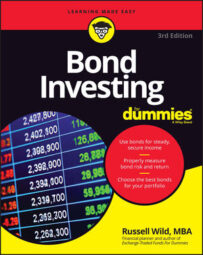With hundreds upon hundreds of bond funds to choose from, each representing a different basket of bonds, where do you start? That part is actually easy: You start with the particular class of bonds you want to own. Treasuries? Corporate bonds? Munis? Long-term? Short-term? Investment-grade? High-yield? A blend of all of the above?
But knowing what class of bonds you want in the basket isn’t enough. You also need to know what kind of basket you want.
Bond baskets (funds) come in five varieties:
Open-end mutual funds, typically referred to simply as mutual funds, are far and away the most common.
Closed-end mutual funds, usually referred to only as closed-end funds, offer comparatively greater return for greater risk.
Exchange-traded funds (ETFs) are the newer kids on the block, catching on very quickly — for good reason.
Unit investment trusts are not well known but perhaps worth knowing.
Exchange-traded notes (ETNs) are sort of bonds within bonds with bells and whistles and their own unique characteristics.
The table offers an overview of how these types of funds compare.
| Fund Type | How Many Funds Are There? | Do They Offer Diversification? | Active Management or Passive (Index)? | Fee or Commission to Buy or Sell? | Average Yearly Expense Ratio |
|---|---|---|---|---|---|
| Mutual funds | 1,739 | Yes | Most are active | Sometimes | 1.01 percent |
| Closed-end funds | 414 | Yes | Active | Yes | 1.27 percent |
| Exchange-traded funds | 150 | Yes | Most are index | Usually | 0.30 percent |
| Unit investment trusts | Varies | Yes | Quasi-active | Yes | 0.81 percent |
| Exchange-traded notes | 40 | Yes | Passive-leveraged | Yes | 0.90 percent |

